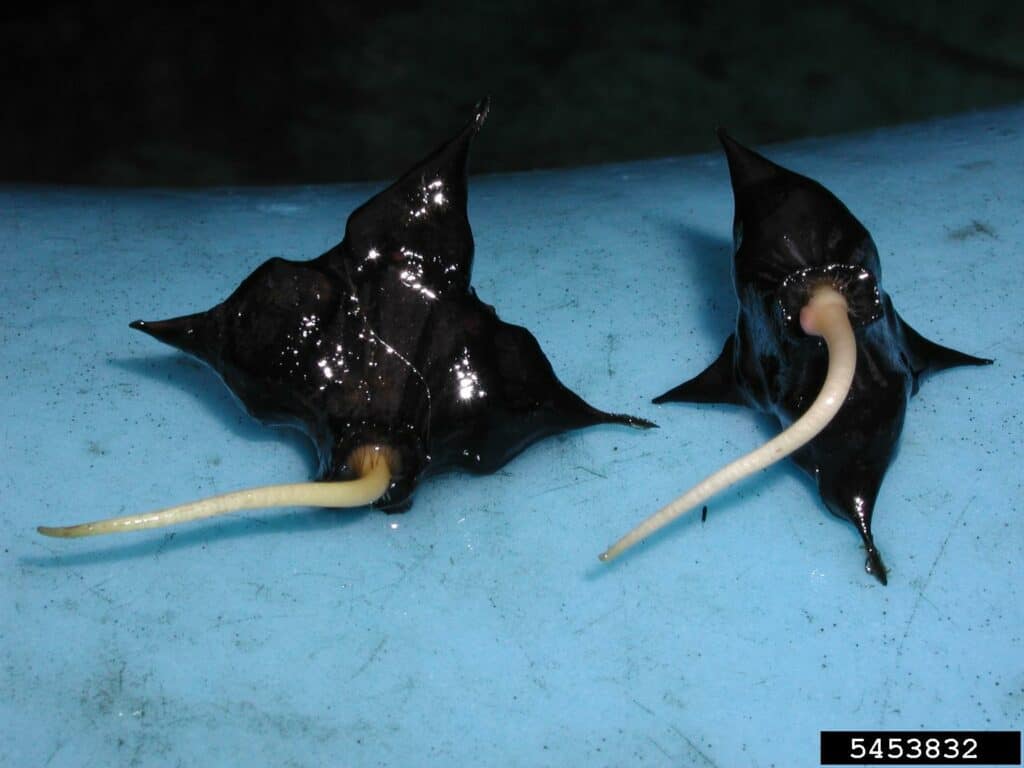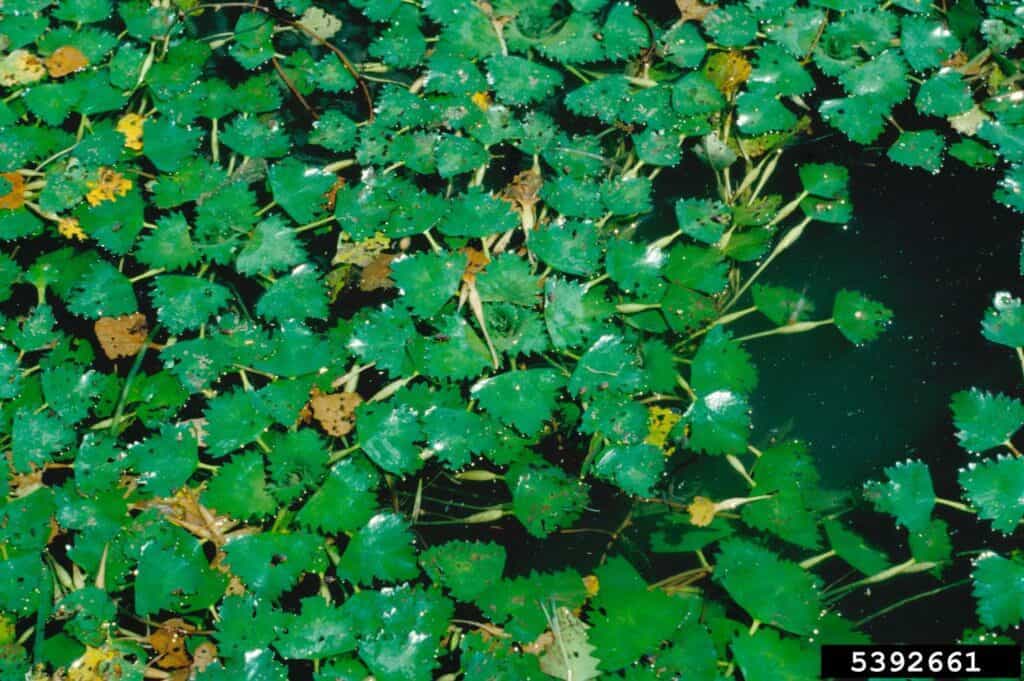Other Common Names: European water chestnut, horned water chestnut, water caltrop.
*Prohibited in Michigan
Report this species to:
EGLE Aquatic Invasive Species Program EGLE-WRD-AIP@Michigan.gov.
If possible, please take one or more photos of the invasive species you are reporting. Also make note of the location, date and time of the observation. This will aid in verification of your report. You may be asked to provide your name and contact information if follow-up is needed.
– Or – use the Midwest Invasive Species Information Network (MISIN) online reporting tool
– Or – download the MISIN smartphone app and report from your phone – MISIN.MSU.edu/tools/apps/#home
Identification:
- Green, floating leaves with sharply serrated edges.
- Leaves form a densely crowded rosette.
- Small, white 4-petaled flowers.
- Produce a hard “woody” nut surrounded by sharp barbed spines.
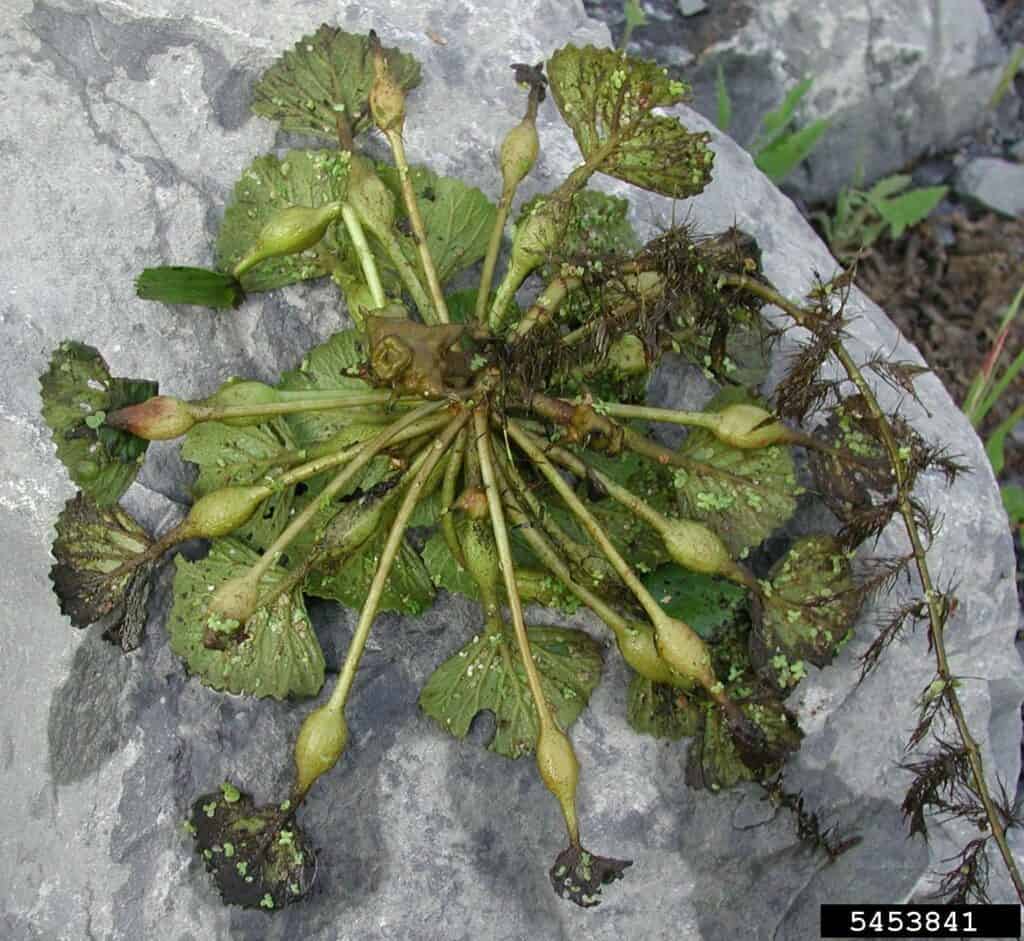
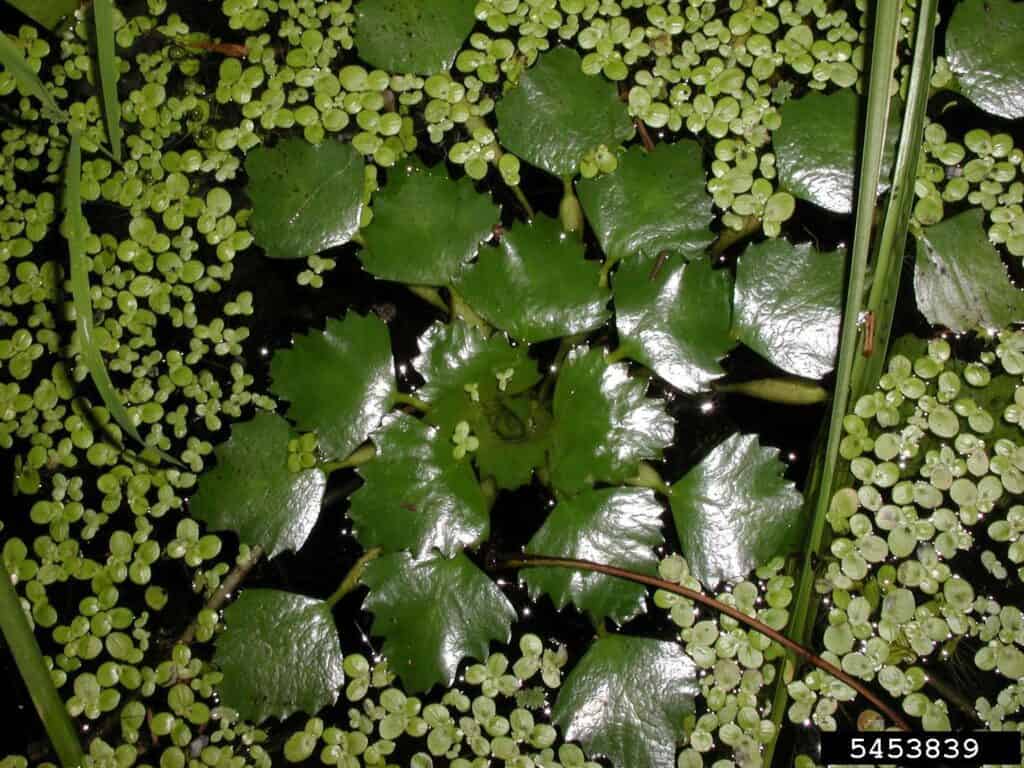
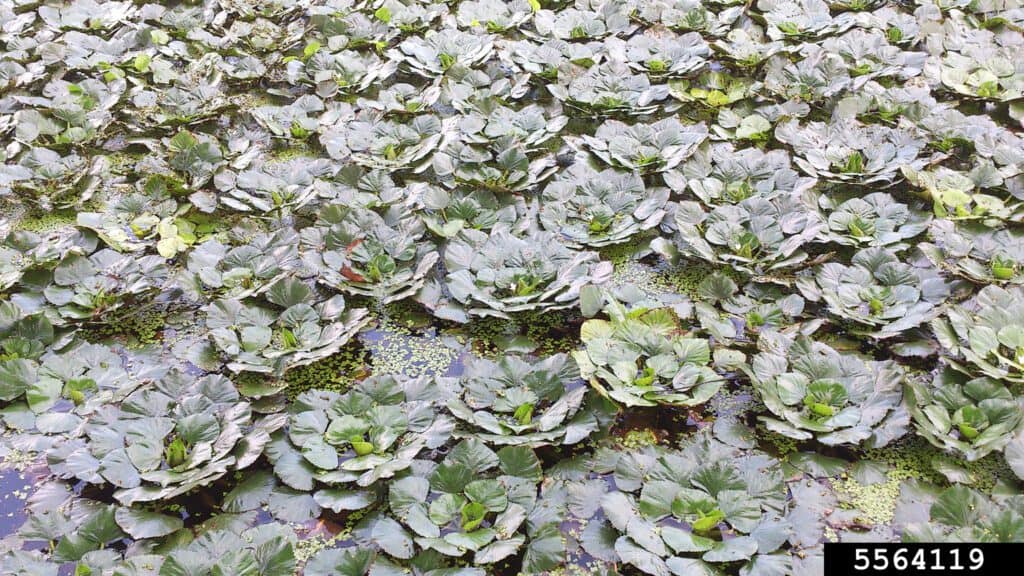
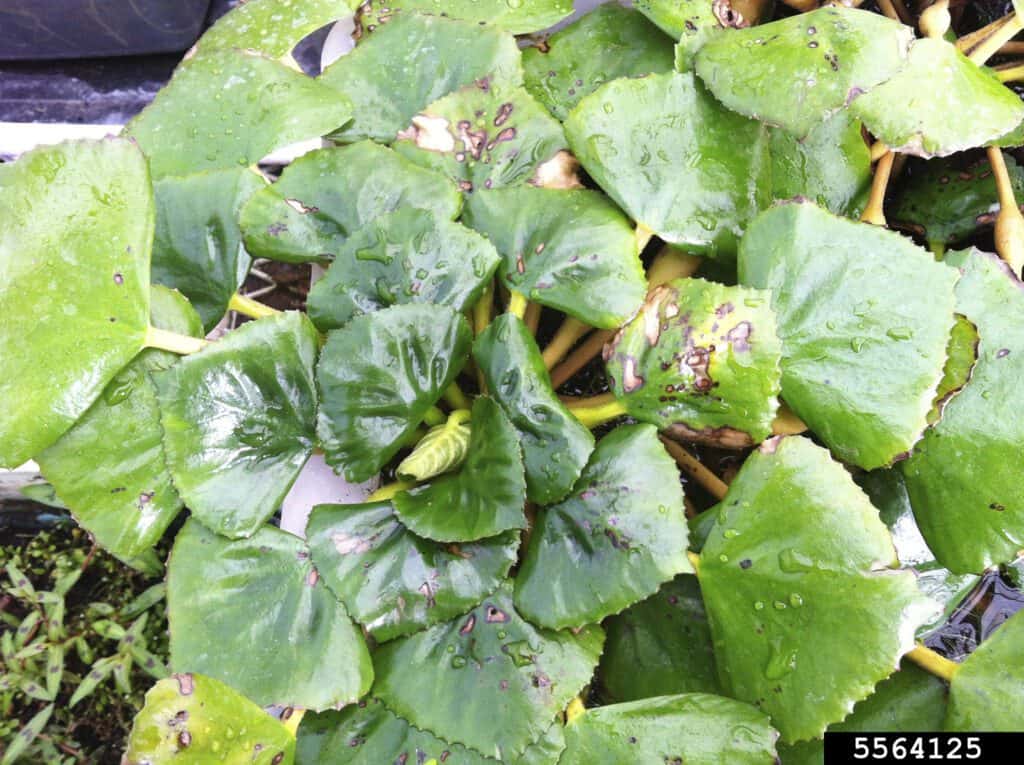
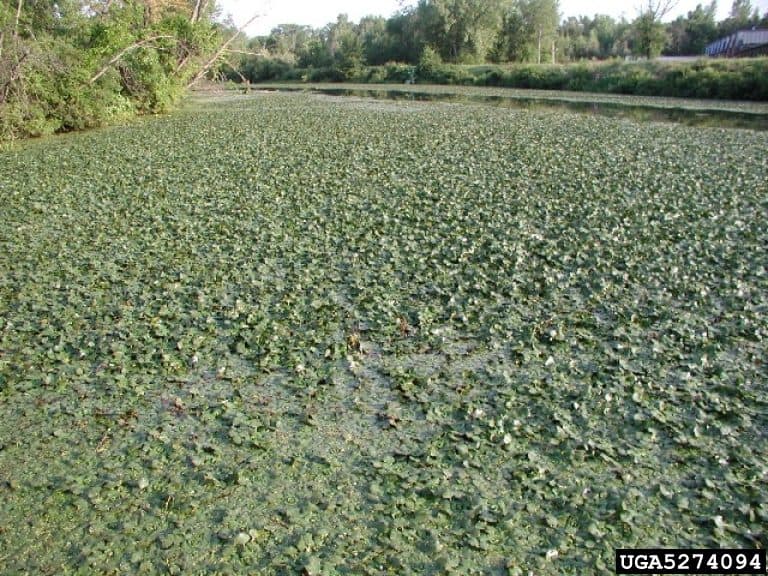
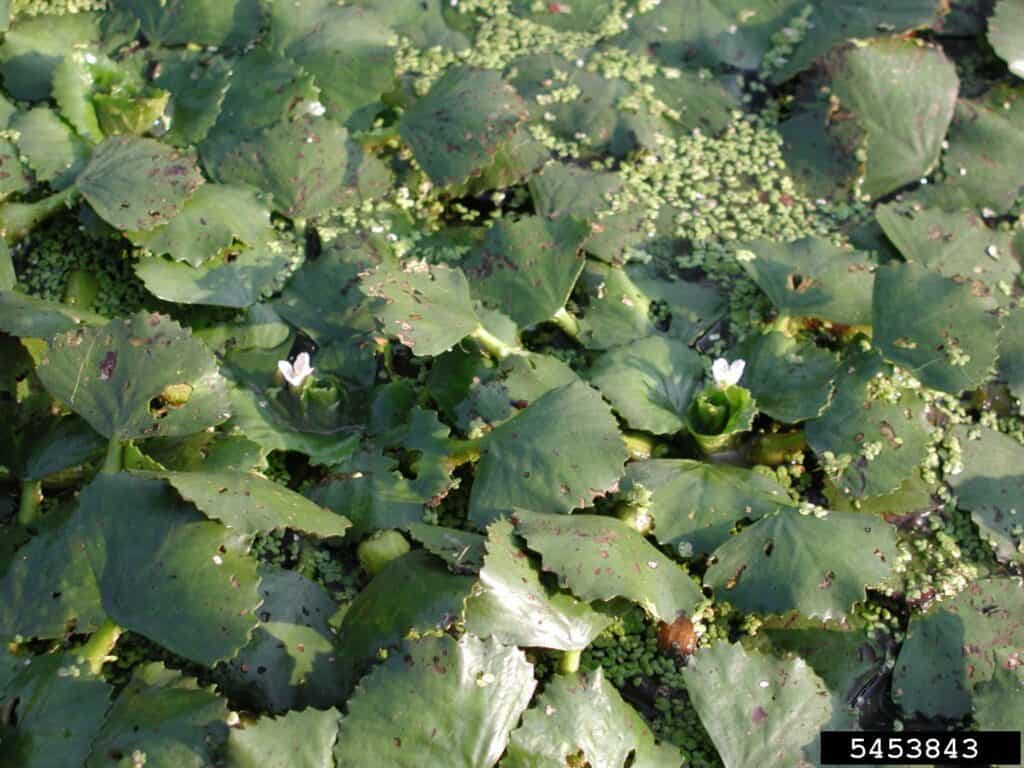
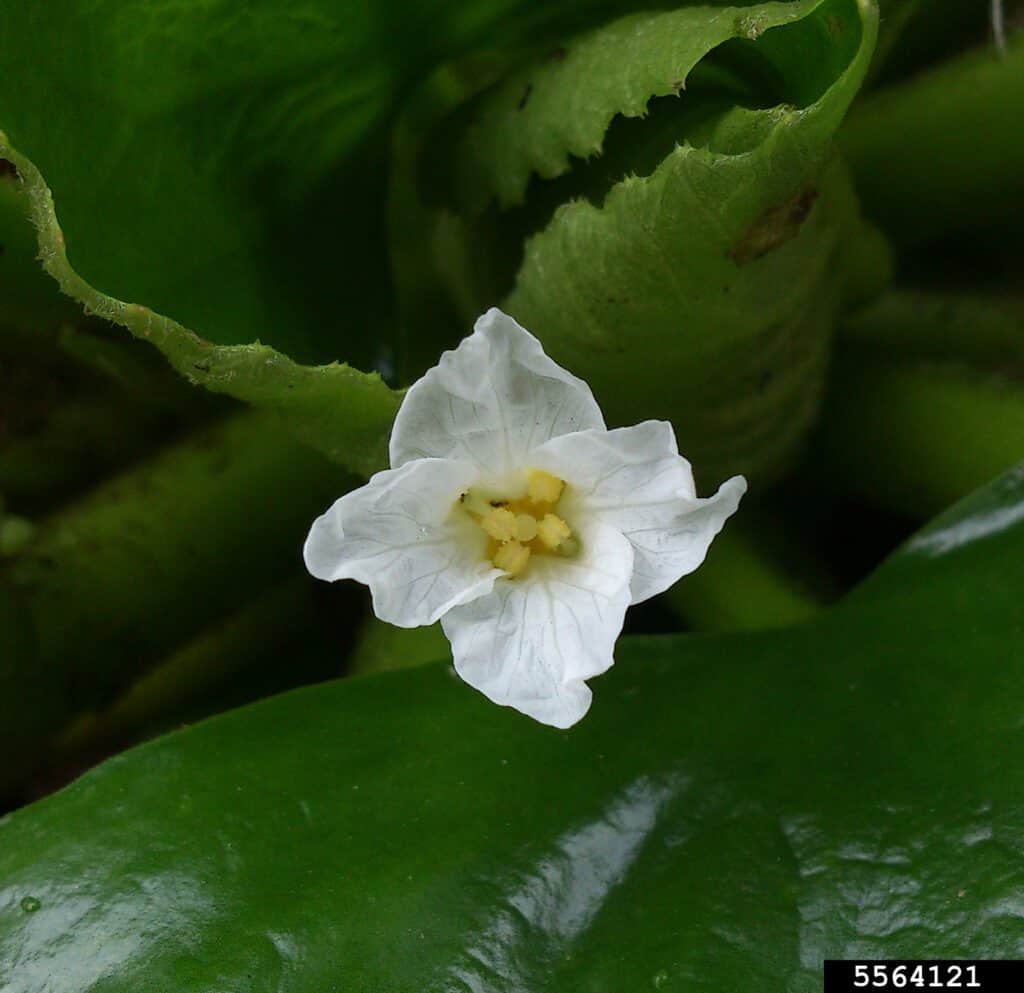
Habitat: While water chestnut shows a preference for shallow, nutrient-rich lakes and rivers, it can grow in mucky substrate
Native Range: Europe, Asia and Africa.
U.S. Distribution: Naturalized in the northeastern United States.
Local Concern: Water chestnut forms dense mats that shade out native aquatic vegetation, leading to a decrease in biodiversity. Decomposition of vegetation below a dense mat decreases oxygen levels and can cause fish kills. Boating and other recreational activities become almost impossible in an area invaded by water chestnut.
MORE INFORMATION:
MDARD Weed Risk Assessment for Water Chestnut (Trapa natans) – This document evaluates the invasive potential of the plant species using information based on establishment, spread and potential to cause harm.
Credit:
Water Chestnut. (n.d.). Retrieved March 15, 2023, from https://www.michigan.gov/invasives/id-report/plants/aquatic/water-chestnut
